Sourdough Potato Bread is the softest, most delicious “white bread” you’ve ever tasted. Soft and fluffy with just the right amount of bite and the perfect texture for sandwiches or toast.
Diana Says
This is so good! A nice soft bread to eat. Everyone loved it!
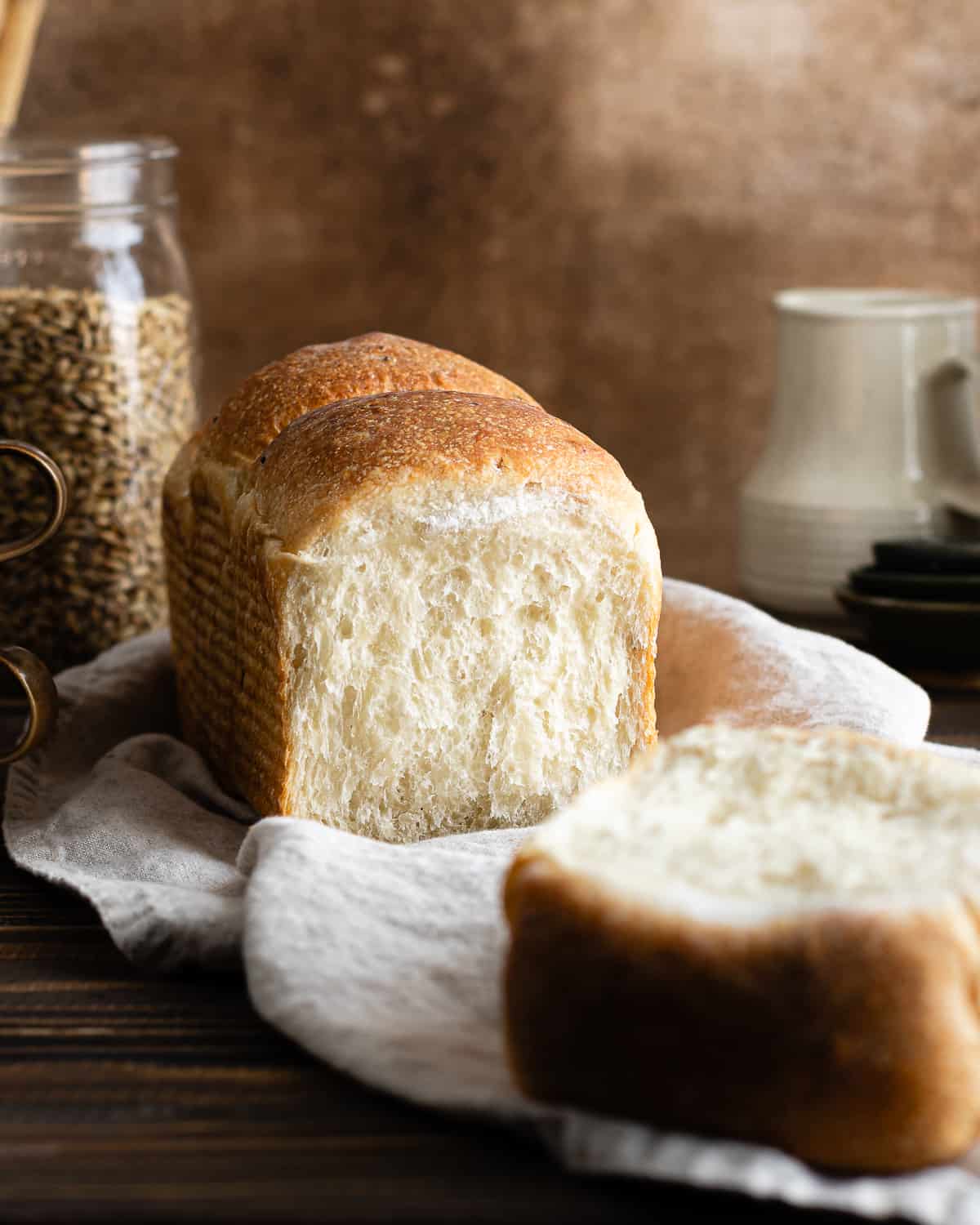
Jump to:
What is Potato Bread?
Potato bread is bread made with the addition of potatoes. Potatoes contain a magical component, starch! Starch naturally absorbs and holds onto water.
The secret to softer bread is higher hydration, however, flour can only absorb a limited amount of water. Incorporating cooked starchy vegetables like potatoes into the dough increases its water content without becoming excessively sticky and difficult to handle. I use this technique in my Sourdough Sweet Potato Biscuits to give them a tender, pillowy texture.
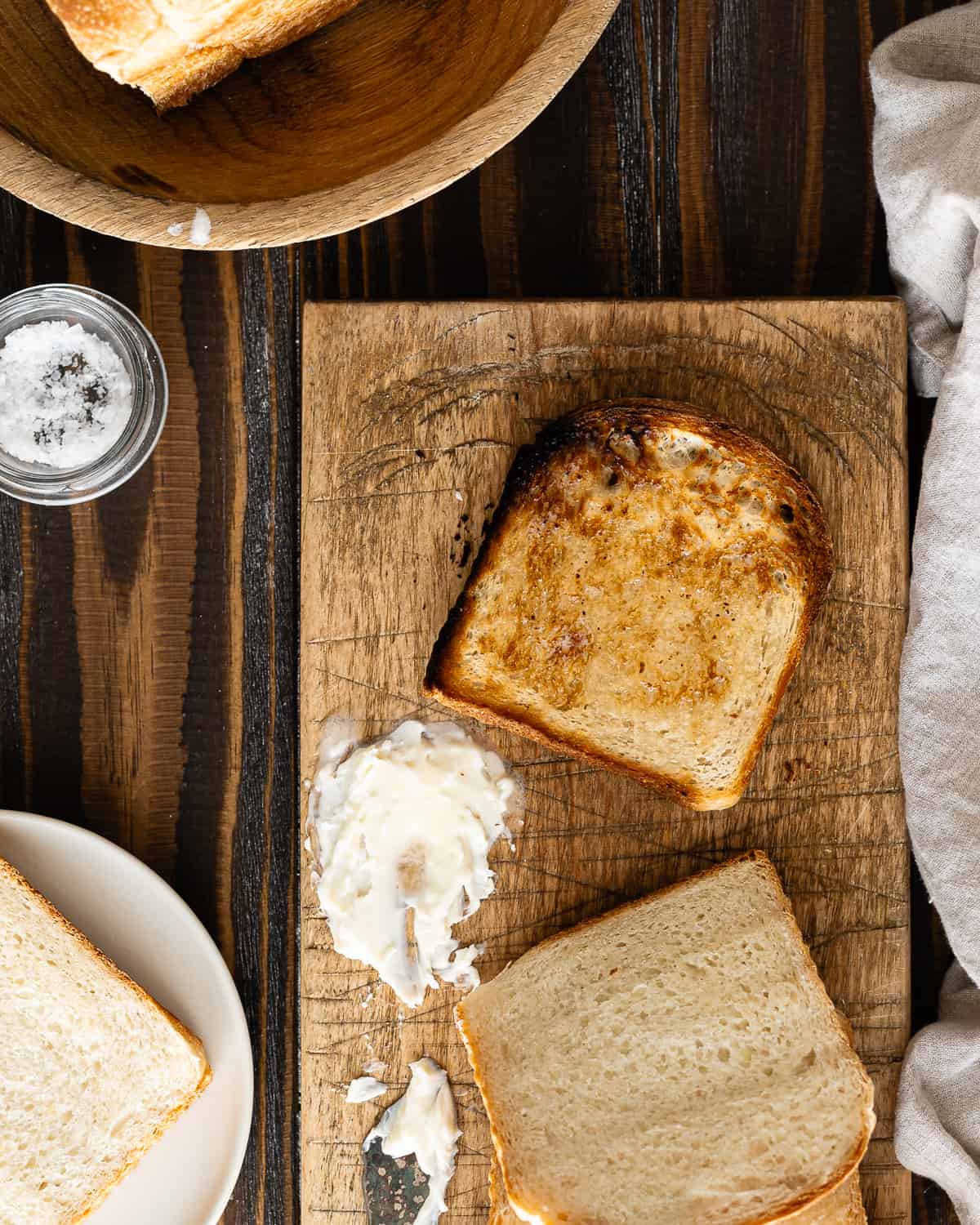
Love soft sandwich loaves? Try my recipes for Sourdough Discard Sandwich Bread, Sourdough Japanese Milk Bread and Sourdough Oatmeal Sandwich Bread.
What to Eat with Potato Bread
Potato bread is delicious and versatile. You can eat it with anything you’d eat with white sandwich bread. Serve it for breakfast, lunch, or dinner. It’s great with peanut butter and jelly, sandwiches, and grilled cheese. It also makes the best garlic bread.
Sourdough Potato Bread is delicious with Homemade Cultured Butter and Homemade Blueberry Preserves and Homemade Raspberry Preserves.
What You Need
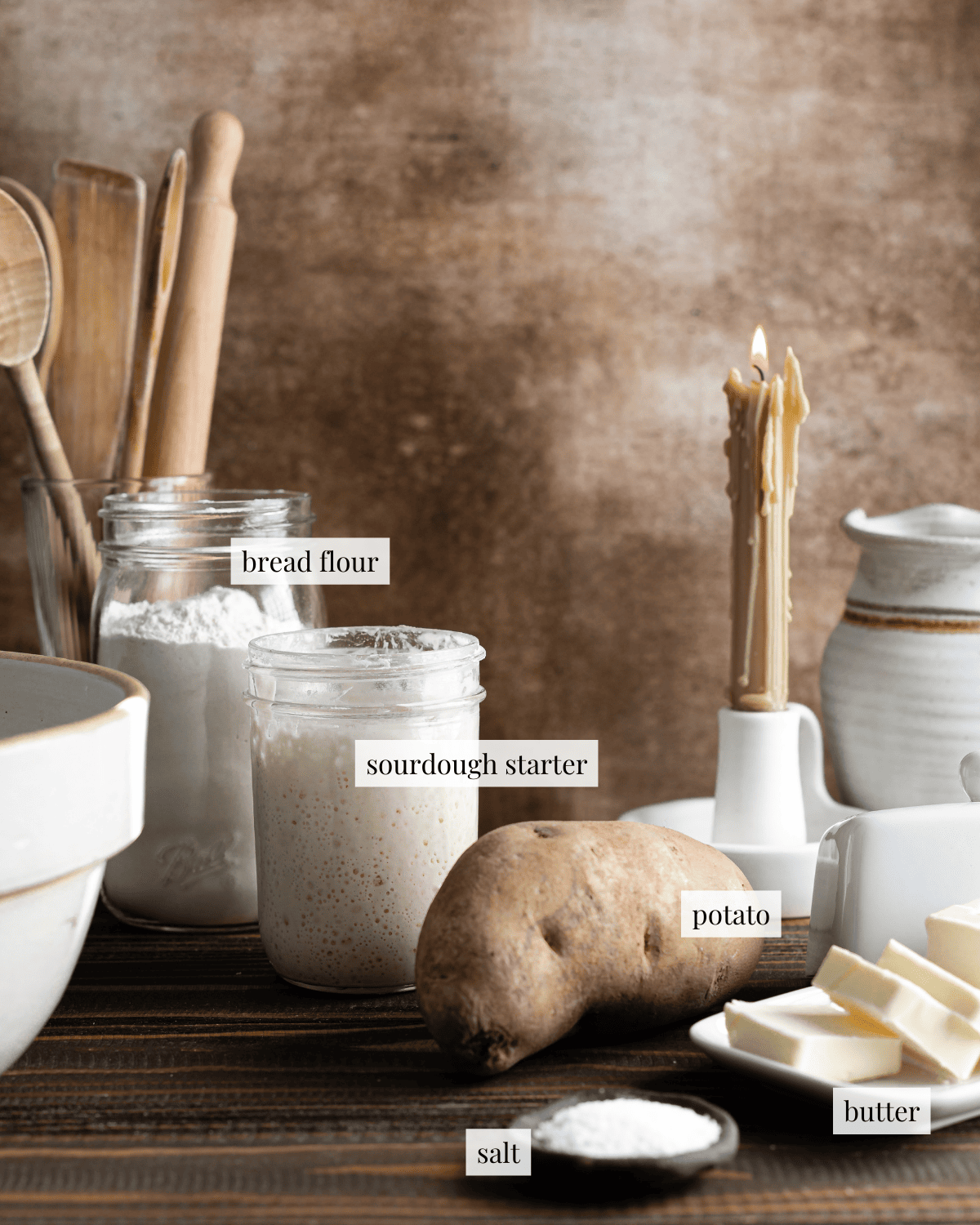
Bread flour - A higher protein content gives this loaf a lovely chewiness, if you don’t have any on hand, all-purpose will work great as well (do not substitute whole wheat flour).
Russet potato - Starch locks in a lot of water resulting in softer bread, it’s best to use Russets since they are higher in starch, but you can substitute any other type of potato, even sweet potatoes.
Potato cooking water - Don't toss this the water you cook your potatoes in. It will have a lot of starch in it, which will increase the starch content of your dough even more.
See recipe card for detailed ingredient information.
Tip
Make sure your starter is healthy, bubbly and active before attempting this recipe. Otherwise your dough won't rise and leading to a dense and gummy loaf.
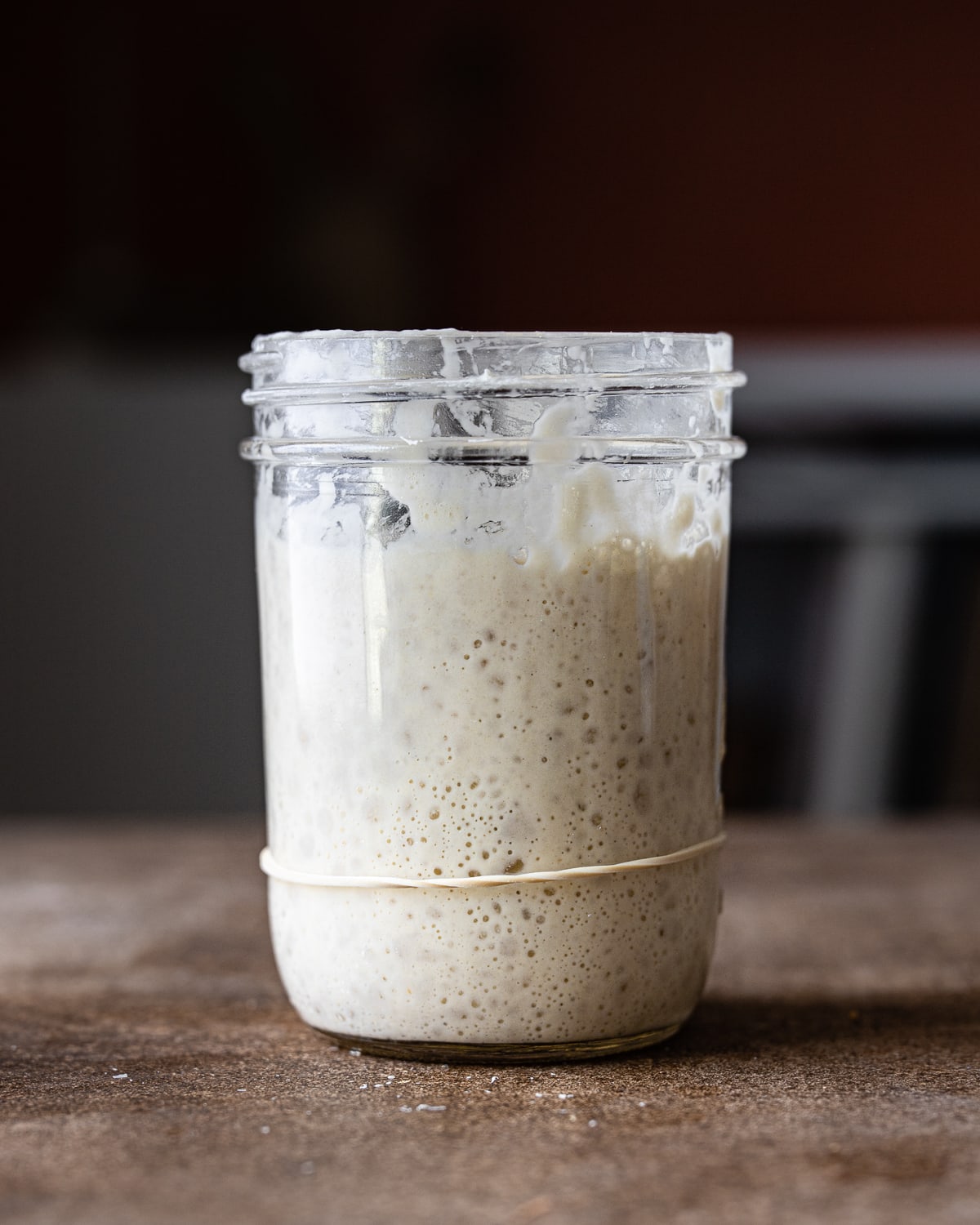
Do you store your starter in the refrigerator? Check out my post on How to Bake with a Starter from the Fridge.
Step-by-step Instructions

STEP 1 Cook the potatoes: Cook the potatoes (image 1). Mash the potatoes (image 2).
Tip
Don't forget to set aside 113 grams (½ cup) of the starchy potato water.

STEP 2 Make the dough: Mix the dry ingredients, potatoes, starter and potato cooking water in a large bowl (image 3). Knead the butter into the dough (image 4).
Tip
Let the dough rest for 30 minutes. This period allows the flour to fully hydrate, making it less sticky and much easier to handle.

STEP 3 Strengthen the dough: Knead the dough for 5 to 10 minutes (image 5). The dough should appear completely smooth (image 6).
Tip
When you start kneading, the dough may feel rough and uneven. However, as you continue to knead, the gluten strands become more organized and elongated. This process helps to smooth out the dough, giving it a uniform texture and appearance.

STEP 4 First proof: Let the dough rise untouched for 3 to 4 hours (image 7). At the end of bulk fermentation, the dough should look like it has doubled in volume and feel like it’s full of air (image 8).
Tip
I’ll be giving time cues in this recipe, but rising times will depend on the activity of your starter and the temperature in your kitchen. Be flexible and look for the signs of fermentation, instead of depending totally on the times stated here.

STEP 5 Cold ferment: Degas the dough, round and place in the refrigerator to ferment overnight (image 9). Divide the dough into 4 portions (image 10).
Tip
During cold proofing, yeast activity slows down due to the cooler temperatures allowing the dough to ferment more gradually and develop more complex flavors. Resulting in a much more flavorful bread.
If you want to bake this loaf on the same day, skip cold proof and proceed to shaping!
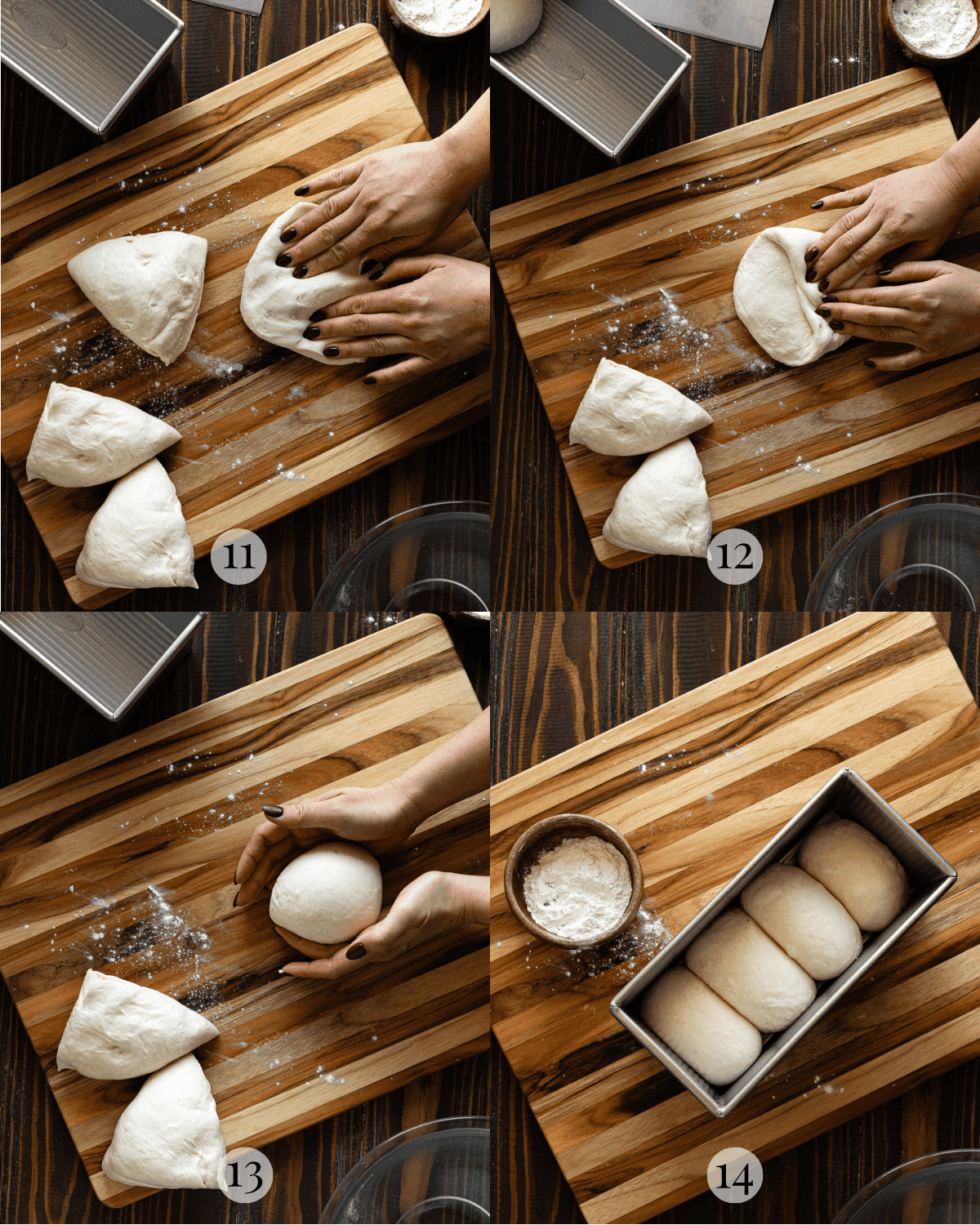
STEP 6 Shape the dough: Flatten the dough into a rough circle (image 11). Fold the corners into the center (image 12). Turn the dough over and round it into a tight ball (image 13). Nestle the dough into a loaf pan (image 14).
Tip
You can shape this loaf in any way. I find that using this method helps prevent the sandwich loaf from splitting as it bakes. This loaf can be baked in either a 9 by 4-inch Pullman pan or 8.5 by 4.5-inch (1 lb) Loaf pan.

STEP 7 Bake: Proof until the dough has filled the pan, about 2 hours (image 15). Bake at 375 for 30 to 45 minutes or until golden brown (image 16).
Baker's Tips
- Weigh your ingredients. Measuring with a scale is much more accurate than using cups and tablespoons. This will help guarantee the success of your bake.
- Use a mature active starter, you’ll want a healthy starter that’s strong enough to efficiently ferment the dough and allow it to rise.
- Use bread flour instead of all-purpose, with a higher protein level, bread flour improves the structure of bread resulting in taller, softer bread.
- Let the bread cool completely before slicing, while it may be tempting to tear into this bread right out of the oven, slicing it while it's still hot will cause all of the moisture to escape and cause your bread to dry out faster.
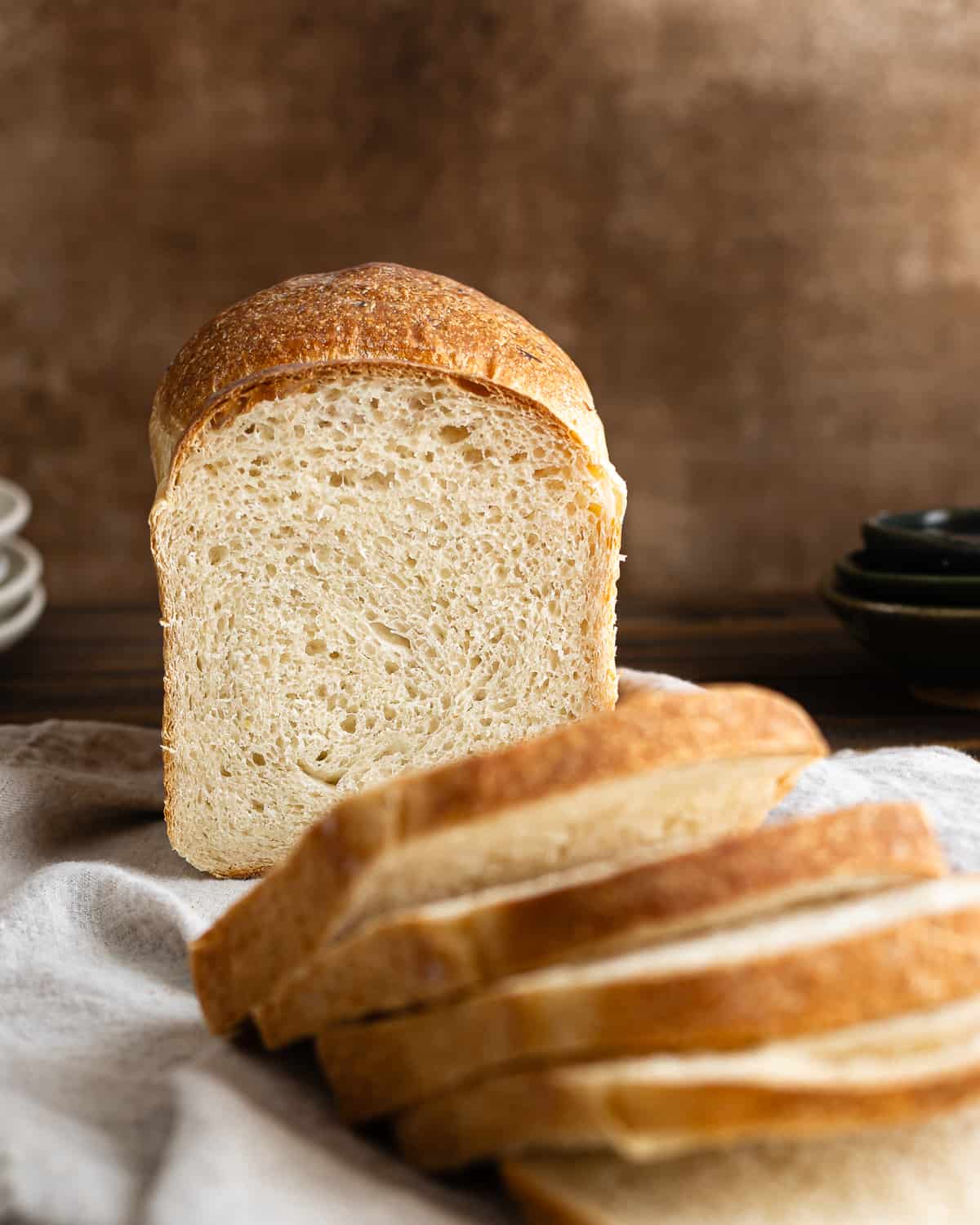
Recipe FAQs
Absolutely, make sure your starter is mature and active before you mix up your dough. Using an inactive starter may slow fermentation down too much which could increase the acidity of your dough, this could break the gluten down too much making your baked loaf unpleasantly sour and gummy.
You can use any type of potato for this bread, but it’s best to use starchy potatoes like Russets. The starch helps bind the ingredients together and helps with the softness of the bread. Waxy varieties will work out fine and you can even substitute sweet potatoes if that’s what you have on hand.
Bread usually ends up hard and dense because it’s under proofed. Make sure you give your dough time to rise, I’ll be giving time cues in this recipe, but fermentation can vary greatly depending on the activity of your starter and the temperature in your kitchen. Watch your dough and make sure it doubles or increases noticeably in volume before shaping it. Your dough should also be very puffy before baking.
The flavor profile of bread depends greatly on the flavor of your personal sourdough starter. If your starter is more acidic, your bread will have a distinctly sour flavor. However, if your starter is milder then your bread should have a slightly sweet flavor.
You may also like
Did this recipe rise to the occasion?
★★★★★
Please leave a star rating and a comment. Your feedback helps me create more delicious sourdough recipes. I read and truly appreciate every message.
Don't forget to PIN this recipe on Pinterest to save it for later!
Thank you for your support!
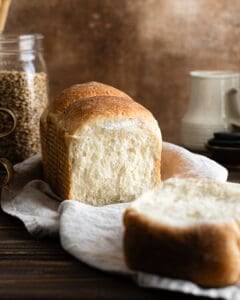
Sourdough Potato Bread Recipe
Equipment
- 9 by 4-inch Pullman pan or 8.5 by 4.5-inch Loaf Pan
This section may contain affiliate links
Ingredients
- 200 grams Russet potato about half of a large potato
- 113 grams potato cooking water cooled
- 420 grams bread flour
- 6 grams salt
- 50 grams granulated sugar
- 113 grams sourdough starter mature and active
- 56 grams unsalted butter softened
Click US Customary to view volume measurements
Instructions
- Cook the potatoes: Dice the potatoes into 2-inch cubes, add potatoes to a small saucepan and cover completely with water. Bring the potatoes to a boil, cook over medium heat for 15 minutes or until the potatoes are fork tender. Set aside 113 grams (½ cup) of potato cooking water. Mash the cooked potatoes. Set the mashed potatoes and water aside until they are completely cool. Do not proceed until your potatoes have cooled completely. Mixing your dough with hot potatoes could kill the yeast in your sourdough starter.
- Make the dough: Combine the potatoes and potato cooking water with the remaining ingredients except for the butter. Stir the ingredients together until your mixture forms a shaggy dough. Knead the butter into the dough one tablespoon at a time, waiting until each addition is fully incorporated before adding more. Cover your bowl with plastic wrap and set in a warm place for 30 minutes. Letting your dough rest will make it much easier to knead and handle.
- Strengthen the dough: Turn your dough out on a lightly floured work surface, knead the dough until completely smooth and elastic, about 5 to 10 minutes.
- Bulk ferment: Round the dough into a tight ball, place it in a clean, lightly-oiled bowl, cover with plastic wrap and set it in a warm place until doubled in volume (about 3 to 4 hours).
- Cold proof: Degas the dough and round it into a tight ball. Cover the bowl with plastic wrap and let it proof in the fridge overnight.
- Shape: Take your dough out of the fridge. Divide the dough into 4 portions, round each portion into a tight ball and nestle them into a 9 by 4-inch Pullman pan.
- Second rise: Cover the pan with plastic wrap and let the dough rise until the dough is puffy and almost fills the pan.
- Bake: Once your dough is almost ready, preheat the oven to 425 F. Once your oven has reached temperature, place your dough into the oven and immediately turn the temperature down to 375 F. Bake for 30 to 45 minutes or until the bread is golden brown and registers at 200 F when probed with an instant-read thermometer.
- Enjoy: Remove your loaf from the pan and transfer to a wire rack. Let your bread cool for at least 30 minutes before slicing.
- Store and reheat: Store leftover slices in a zip lock bag at room temperature for up to 3 days.
Tips
These recipes were developed and tested using grams for precise measurements. To increase your chances of success, I recommend investing in a kitchen scale. I've included rough volume estimates (in tablespoons and cups), but they might not be totally accurate.
Remember all ovens are unique, these recipes were tested in my oven which runs cooler than others. You might need to lower the temperature if your bake appears to be browning too quickly. Monitor your bake closely and make adjustments if needed.
Notes
Nutrition
I am not a nutritionist or dietitian, any nutrition information provided is an estimate.

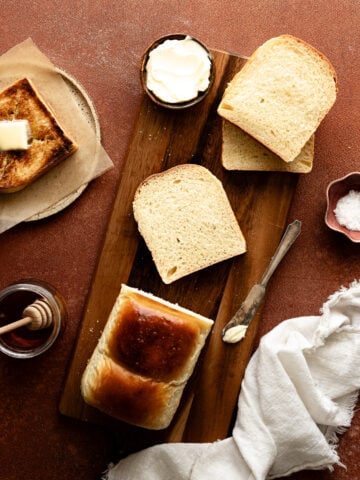
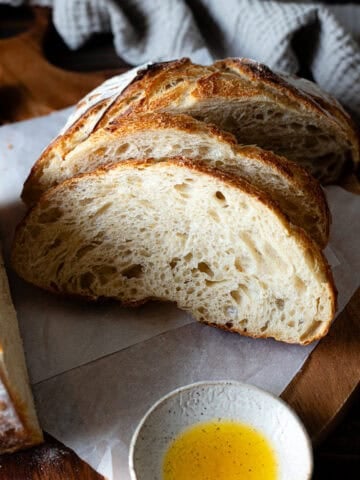
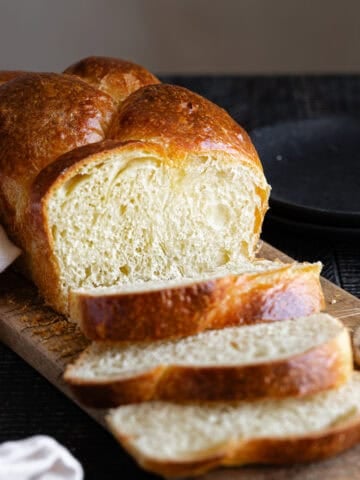
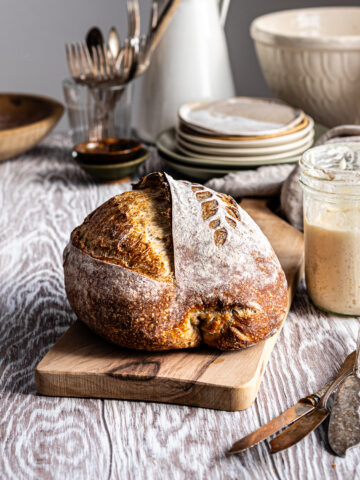

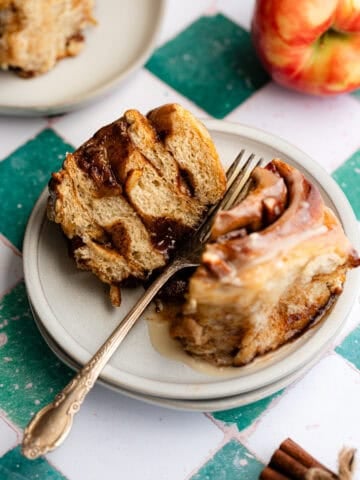
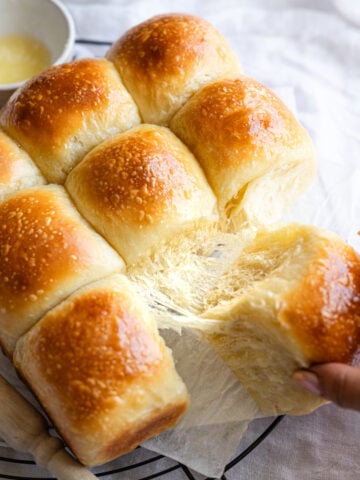
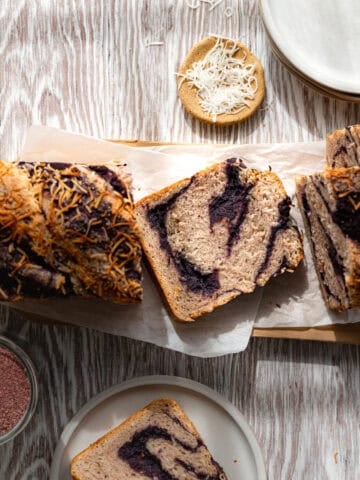
Janice says
Hi Hanna! Do you have a video on this when you need it. Mine started to stick to me and did not smooth out then I wet my hands so it wouldn’t stick and well the dough was good at first but then it started sticking again now I have it in a stand mixer and I added a bit more flour but it’s not getting smooth.
Hannah Dela Cruz says
Hi Janice! Sorry to hear the recipe gave you a tough time. I find that when any bread dough starts to stick, the best thing to do is stop kneading and let it rest. There’s a point where too much handling can cause the dough to tear and disrupt the gluten bonds, which actually makes it feel stickier.
When that happens, try not to add more flour. Unhydrated flour can be a temporary fix, but it often leads to the dough becoming sticky again—and it can change the final texture of your bread. A rest period of 15 to 30 minutes gives the gluten time to recover and form stronger bonds, which makes the dough easier to work with.
Alternatively, if you're not yet comfortable handling sticky dough, feel free to make your bread in a stand mixer. That’s always a great option too!
Cathy Smith says
This recipe is the one I use all of the time. It is very close to the bread my Grandma baked. Great multipurpose loaf without all of the hard crust.
Hannah Dela Cruz says
So glad you loved it!
Dan Pesante says
Hi Hanna
Thanks for sharing your sourdough recipes, recommendations, and for another very good recipe. Potato bread is so nice, but this sourdough potato bread is just excellent, with the typical soft texture and very flavorful.
Kudos!
Hannah Dela Cruz says
So glad you loved it!
Donna says
I can't find ANYWHERE that says what size Pullman pan you used!! When I click on 'pullman pan', it says that page doesn't exist! Kind of an important point to know what size pan to use!!
Hannah Dela Cruz says
Hi Donna! Thanks for your comment, I was able to fix the link and added the pan size throughout the recipe as well. It's hard to keep track of the links at all times, but thanks to your feedback, I was able to fix it.
Marie Eve says
First of all, I want to thank you for all the great sourdough recipes you share! I have made many of your cookies ( the chocolate crinkles are on repeat in my home) and bread and they are fantastic! I was wondering if I could use this recipe to make hamburger buns instead of a loaf.
Hannah Dela Cruz says
Absolutely! You can just shape them into buns instead of a loaf. Check out my post on Sourdough Hamburger Buns for shaping and baking instructions.
https://makeitdough.com/sourdough-hamburger-buns/
Raina says
I have to give it 5 stars because I had to tamper with the recipe and it still turned out great! I used a baked potato and was a few grams shy so I added potato flakes. Then it was too dry so I added more water, then it was too wet and so on... It still turned out soft and delicious. I will definitely make again, following directions!
Hannah Dela Cruz says
I'm so glad you were able to make this recipe work for you!
Carol says
Would it be OK to use a stand mixer for kneading the dough?
Hannah Dela Cruz says
Yes!
Raina says
Hi- would like to try this with a leftover potato, can I use milk in place of the potato water?
Hannah Dela Cruz says
Hi Raina! This should work just fine or you could also use water.
Nicole says
Whats the difference of shaping 4 balls of dough rather than one large one?
Hannah Dela Cruz says
You can shape the loaf however you want. I prefer shaping in this way because I find that it's less likely to split on the side.
Diana says
This is so good! A nice soft bread to eat. Everyone loved it!
Mary says
This looks delicious! What size pullman pan do you use? Thank you.
Hannah Dela Cruz says
The exact pan that I use is linked in the recipe!
Anne says
I’m a huge fan of the potato bread in your book (the best!) so I wanted to try this variation. Very happy with the results and my husband loved it too. I let the bulk fermentation go 8 hours — didn’t seem like too much at all — then shaped in loaf pan, popped in fridge overnight, let it rise on the counter for an hour or so, and baked it for 45 minutes. So good! Loved that this bread used the potato water for the liquid. One question: is the russet potato weight before or after cooking? Thanks again for all the brilliant recipes! We love them!
Hannah @ Make It Dough says
Yay so happy you loved the recipe and you were able to adjust and be flexible so it would work for you. That's what bread baking is all about. I believe I weigh the potatoes after cooking! I cooked the entire potato and gave the leftovers to my pups who loved the extra treat in their dinner.
A says
Can I use potatoes made from potatoes flakes? or potato pearls?
Hannah Dela Cruz says
I'm not sure if this would work since I've never tried it myself. But you can always try and make mashed potatoes with them and see how it turns out. I can't guarantee your results and you'll have to be careful about the amount of water you add! Try it out and let me know how it goes!